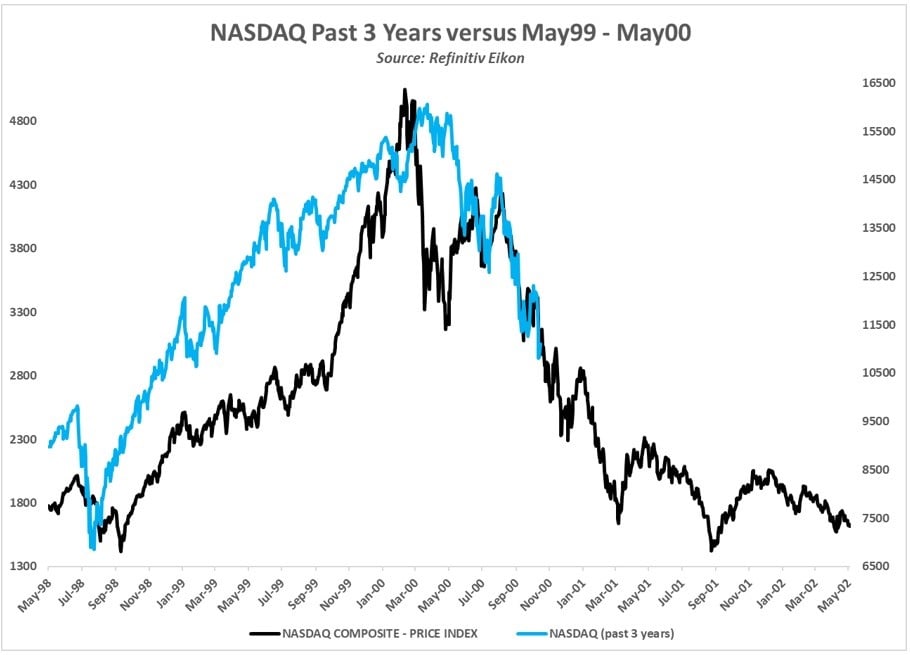
Schalk Louw is a portfolio manager at PSG Wealth.
The similarities between the current tech sell-off and the dotcom crash are stark and extreme caution is advised, writes Schalk Louw.
Get the biggest
business stories emailed
to you every
weekday, or go to the Fin24 front page.
Tech stocks have fallen dramatically over the past eight months with the Nasdaq down almost 27% year to date. Naturally, this decline has been a key focus in global investment circles, with the question front of mind for investors whether they should be considering switching out of stocks in case they fall even further, or whether now is a good time to be invested?
The more pertinent question to ask is whether we are seeing a repeat of the dotcom crash of 2000.
The dotcom crash was really as a result of three major themes. Firstly, tech stocks, and by implication the Nasdaq, were trading at extremely high valuations (PEs) in the late ’90s and early 2000. Secondly, the US Federal Reserve (Fed) started to tighten their monetary policy, hiking rates six times between June 1999 and May 2000. And then thirdly, this monetary tightening resulted in an economic downturn, followed by a recession.
You don’t need to be a market expert to note that these themes from the dotcom crash are once again prevalent in the current market environment.
For starters, the Nasdaq was trading at valuations last seen during the so-called dotcom era, even though economic growth had not reached the market’s expectations.
In March 2022, the Fed decided to tighten its monetary policy and increased rates for the first time since 2018. The effect interest rate hikes have on both economic and earnings growth is well documented.
In June 2022, the Fed surprised the market by hiking rates for the third time, but rather than increasing the Fed rate by 0.5% as expected, they decided to raise rates by 0.75%. This caused quite a few prominent economists to state that in their view, the US will undoubtedly go into recession, as was the case in the early 2000s. This all came to bear in the fact that the Nasdaq had its worst first half of the year on record in 2022.
Even after declining by almost a third off its highs, one can see that the Nasdaq is still not trading at levels that can be considered very cheap, and history has shown us how PEs can drop and stay low for some time.
The damage which has been wrought on investors’ portfolios so far this year really becomes apparent when one takes a step back from the index and looks at individual counters.
For example, pandemic-era market darlings Netflix, Shopify and Zoom are down -70%, -74% and -40% respectively during the first half of 2022. The mega caps have not been spared either. Apple is down -23%, Microsoft is down -24%, while Facebook has lost a staggering -53% of its value so far this year.
Is this the end of the correction?
What we do know, for now, is that inflation is still not under control, and according to the Fed, interest rates will continue to increase this year. During the dotcom correction, the Nasdaq traded 36% off its highs, six months after the top. Back then, investors asked the same questions we’re asking now, and they were answered – 18 months later. The Nasdaq was trading down a further 40%.

Will this time be different? We will have to wait and see, but the similarities are stark and extreme caution is advised.
Schalk Louw is wealth manager at PSG Wealth, Old Oak in Cape Town. Views expressed are his own.

